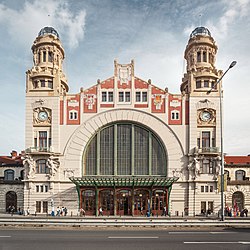
Prague is the capital and largest city of the Czech Republic and the historical capital of Bohemia. Situated on the Vltava river, Prague is home to about 1.4 million people.

Art Nouveau, Jugendstil in German, is an international style of art, architecture, and applied art, especially the decorative arts. It was often inspired by natural forms such as the sinuous curves of plants and flowers. Other characteristics of Art Nouveau were a sense of dynamism and movement, often given by asymmetry or whiplash lines, and the use of modern materials, particularly iron, glass, ceramics and later concrete, to create unusual forms and larger open spaces. It was popular between 1890 and 1910 during the Belle Époque period, and was a reaction against the academicism, eclecticism and historicism of 19th century architecture and decorative art.

The Metropolitan Cathedral of Saints Vitus, Wenceslaus and Adalbert is a Catholic metropolitan cathedral in Prague, and the seat of the Archbishop of Prague. Until 1997, the cathedral was dedicated only to Saint Vitus, and is still commonly named only as St. Vitus Cathedral.

Olšany Cemeteries is the largest graveyard in Prague, Czech Republic, once laid out for as many as two million burials. The graveyard is particularly noted for its many remarkable Art Nouveau monuments.

The Vienna Secession is an art movement, closely related to Art Nouveau, that was formed in 1897 by a group of Austrian painters, graphic artists, sculptors and architects, including Josef Hoffman, Koloman Moser, Otto Wagner and Gustav Klimt. They resigned from the Association of Austrian Artists in protest against its support for more traditional artistic styles. Their most influential architectural work was the Secession exhibitions hall designed by Joseph Maria Olbrich as a venue for expositions of the group. Their official magazine was called Ver Sacrum, which published highly stylised and influential works of graphic art. In 1905 the group itself split, when some of the most prominent members, including Klimt, Wagner, and Hoffmann, resigned in a dispute over priorities, but it continued to function, and still functions today, from its headquarters in the Secession Building. In its current form, the Secession exhibition gallery is independently led and managed by artists.
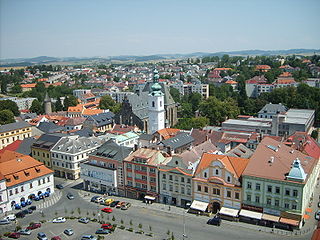
Klatovy is a town in the Plzeň Region of the Czech Republic. It has about 23,000 inhabitants. The historic town centre is well preserved and is protected by law as an urban monument zone.
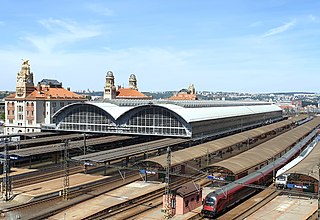
Praha hlavní nádraží is the largest railway station in Prague, Czech Republic. It opened in 1871 as Franz Josef Station, after Franz Joseph I of Austria. During the First Republic and from 1945 to 1948 the station was called Wilson Station, after the former President of the United States Woodrow Wilson.
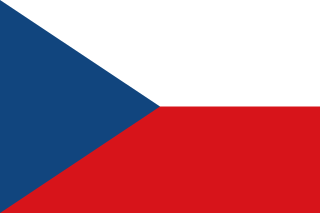
Czech culture has been shaped by the nation's geographical position in the middle of Europe, the Slavic ethnicity of Czechs, influences from its neighbors, political and social changes, wars and times of peace.

Czech Cubism was an avant-garde art movement of Czech proponents of Cubism, active mostly in Prague from 1912 to 1914. Prague was perhaps the most important center for Cubism outside Paris before the start of World War I.

Ladislav Jan Šaloun was a Czech sculptor of the Art Nouveau period.
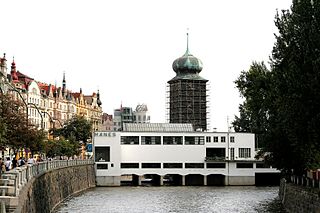
The Mánes Association of Fine Artists was an artists' association and exhibition society founded in 1887 in Prague and named after painter Josef Mánes.

Jiří Kroha was a Czech architect, painter, sculptor, scenographer, designer and pedagogue. He was an important exponent of Czech architecture and design during inter-war period.

The Academy of Arts, Architecture and Design in Prague is a public university located in Prague, Czech Republic. The university offers the study disciplines of painting, illustration and graphics, fashion design, product design, graphic design, ceramics and porcelain, photography and architecture. Along with other buildings, the academy is part of the city's unique glass art cluster.

Maximilian Pirner was a Czech painter. He was a member of the Vienna Secession, and associated with the Mánes Union of Fine Arts.
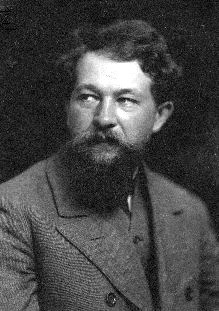
Josef Mařatka was a Czech sculptor.

The Prague City Museum is a museum serving the capital region of Prague. Its responsibilities include the management and presentation of collections documenting Prague’s past, as well as research into the history of the Czech capital and its presentation to the general public. The main museum building is located in Prague at Florenc (Prague 8, Nové Město, Na Poříčí 1554/52.

Antonín Viktor Barvitius, also known as Anton Barvitius, was a Czech architect working in Revivalism architecture.
Art Nouveau temples are churches, chapels, synagogues, and mosques built in the style known as Art Nouveau in French and English languages, Jugendstil in Germany and Nordic countries, Secessionsstil in countries of former Austro-Hungary, Modernisme in Catalan, Modern in Russian, Stile Liberty or Stile Floreale in Italian. As National Romantic style is also referred to Art Nouveau, churches of that style are also listed here, as well as some temples not of pure Art Nouveau style but with distinctive Art Nouveau features.

Czech architecture, or more precisely architecture of the Czech Republic or architecture of Czechia, is a term covering many important historical and contemporary architectural movements in Bohemia, Moravia, and Silesia. From its early beginnings to the present day, almost all historical styles are represented, including many monuments from various historical periods. Some of them are UNESCO World Heritage Sites.

Josef Danda was a Czech architect. He was a specialist in railway construction and one of the authors of the Praha hlavní nádraží, the most important railway station in the Czech Republic.
